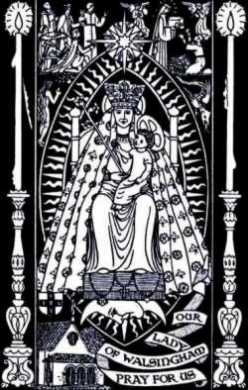The British never really got the hang of the Baroque, with modest exceptions like Saint Paul's in London (only built at all because the architect lied to his patrons who wanted something less Continental) and the apotheosis of James the First in the Banqueting House, Whitehall. I always smile when I go to Whitehall at the amusing location of the apotheosis relating to Villiers Street. The Duke of Buckingham, George Villiers was the favourite of the King, indeed was chased by him throughout his life and then promptly legged it to France to get married when the King died. James is in glory on a dining room ceiling and George is a backstreet going from the Embankment to Charing Cross, but containing Gordon's Wine Bar, which is a redeeming factor.
The baroque angel above is in York Minster, its pinched face, flat angle and overly realistic skull deny the glory of the continental baroque and bring an imported but little understood style to a building where it is hardly flattering. Wait until you see the picture tomorrow for further elucidation. It was many years later when Anglo Catholic Priests began traipsing abroad on holiday (see Edward Forse's 'Ceremonial Curiosities' if you can) and encountering the glory of the Baroque that churches such as Saint Augustines Tonge Moor and Saint Mary's Bourne Street began being renovated in a glorious, but cheaply done, simulacrum of a hundred holiday memories. This 'back to baroque' movement briefly caught our imagination before the return to Liturgical Movement Gothic austerity began, closely followed by the work of the aftermath of the Second Vatican Council.
The baroque angel above is in York Minster, its pinched face, flat angle and overly realistic skull deny the glory of the continental baroque and bring an imported but little understood style to a building where it is hardly flattering. Wait until you see the picture tomorrow for further elucidation. It was many years later when Anglo Catholic Priests began traipsing abroad on holiday (see Edward Forse's 'Ceremonial Curiosities' if you can) and encountering the glory of the Baroque that churches such as Saint Augustines Tonge Moor and Saint Mary's Bourne Street began being renovated in a glorious, but cheaply done, simulacrum of a hundred holiday memories. This 'back to baroque' movement briefly caught our imagination before the return to Liturgical Movement Gothic austerity began, closely followed by the work of the aftermath of the Second Vatican Council.
 But enough of architecture for one day, it always seems to upset people who imagine that just because it is possible to critique something it is not also possible, on another level, to like it. Maybe this picture of Robin Hood's Bay near Whitby, showing the pub to the left which I visited for you, dear reader and the open sea beyond, might cheer up any readers who are ill and sanguine in East London, for whom we pray.
But enough of architecture for one day, it always seems to upset people who imagine that just because it is possible to critique something it is not also possible, on another level, to like it. Maybe this picture of Robin Hood's Bay near Whitby, showing the pub to the left which I visited for you, dear reader and the open sea beyond, might cheer up any readers who are ill and sanguine in East London, for whom we pray. And Whitby taken from the 199 steps leading to the magnificent survival that is Saint Mary's, just behind your scribe,. about which there will be more tomorrow. The history of Saint Mary's, Saint Hilda's and Saint Ninian's in Whitby is very interesting for the follower of Church politics.
And Whitby taken from the 199 steps leading to the magnificent survival that is Saint Mary's, just behind your scribe,. about which there will be more tomorrow. The history of Saint Mary's, Saint Hilda's and Saint Ninian's in Whitby is very interesting for the follower of Church politics. A picture of the Sister's graveyard in Sneaton Castle, where they await the general resurrection, along with their donkeys and cats which are buried in a little plot to the side!
A picture of the Sister's graveyard in Sneaton Castle, where they await the general resurrection, along with their donkeys and cats which are buried in a little plot to the side!



_Black_s_s_s_s_s.jpg)
